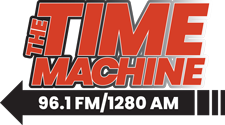The U.S. labor market continues to show signs of a persistent slowdown. At the same time, inflation data is mixed, with core inflation exceeding expectations while headline inflation continued to moderate. Accelerating producer prices suggest that inflation may be more stubborn than previously anticipated. This scenario could lead to fewer Fed rate cuts ahead, potentially keeping interest rates higher for American consumers in the foreseeable future.
Despite rebounding from October’s hurricane disruptions, the U.S. economy added 518,000 jobs over the past three months, compared to 593,000 during the same period last year.
Stronger-than-expected job gains in November do not necessarily indicate that the U.S. economy is reheating. Although the 4.2% unemployment rate is slightly below the Federal Open Market Committee’s (FOMC) median forecast of 4.4%, recent data continues to highlight a persistent labor market slowdown.
On the inflation front, the picture remains mixed. Core inflation, as measured by the personal consumption expenditures (PCE) price index, rose 2.8% year-over-year in October, exceeding the Fed’s latest Summary of Economic Projections. However, headline inflation, which the Fed anticipated to end the year at 2.3%, is currently on target.
This week’s data will provide the first inflation update for November. While the Consumer Price Index (CPI) is informative, the Producer Price Index (PPI) tends to be a more reliable predictor of both the level and growth rate of the PCE price index, the Fed’s preferred measure of inflation. Historically, rising producer prices signal future pain for consumers, as the gap between the PPI and PCE tends to close over time. Since May, the gap between these measures had nearly disappeared, but producer prices are now climbing faster than consumer prices. In October, final demand PPI rose 2.4% year-over-year, accelerating from 1.9% in September, while headline PCE edged up to 2.3% from 2.1% the prior month.
Consensus estimates suggest that PPI increased by 0.2% in November, pushing the index to a 2.6% year-over-year gain. While stronger-than-expected CPI and PPI figures could drive Treasury yields higher and raise questions about additional Fed rate cuts in 2025, the December rate cut is widely regarded as a done deal.
Elsewhere in the economy: U.S. productivity is estimated to have risen by 2.2% in Q3. Whether this trend continues into 2025 remains to be seen. Without sustained productivity growth, a shrinking labor force combined with re-accelerating wage increases could point to rising consumer price inflation pressures.







